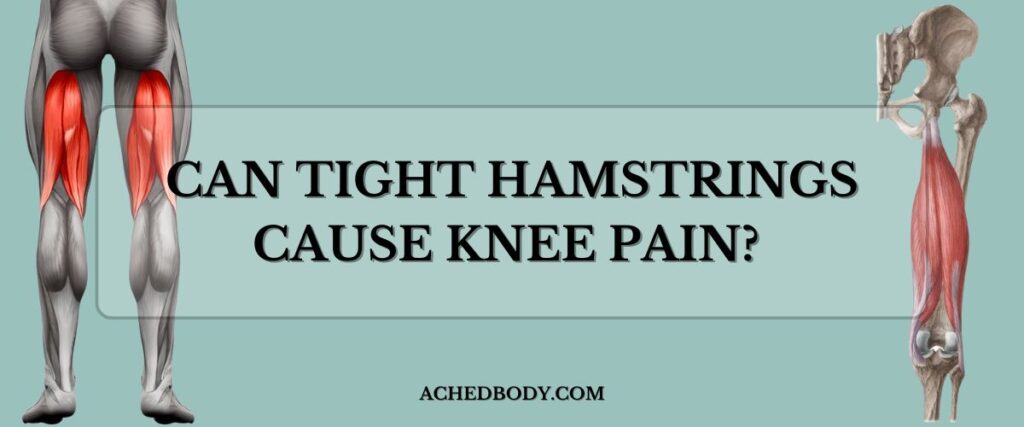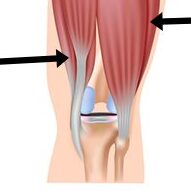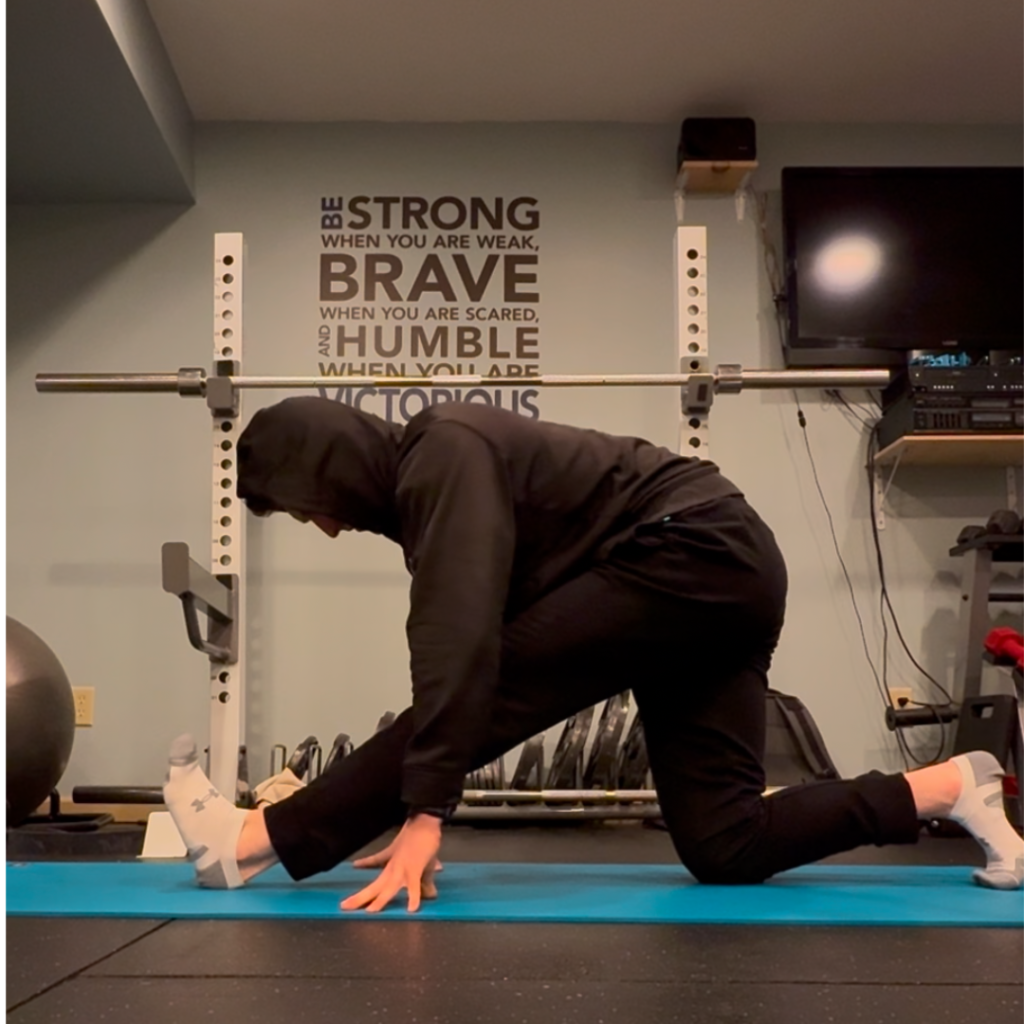
Knee Pain Caused By Tight Hamstrings
Knee pain is often the result of tight muscles surrounding the joint.
The problem is, we have a lot of muscles and it can be difficult to pinpoint whether your hamstring is causing the knee problem or if it is something else.
But in this guide, I will explain why it’s possible that your hamstrings are the cause and what to do to fix the problem.
I know because I fixed mine—and spoiler alert: it works.
So, learn more about different body parts with my Ultimate Stretch Guide and Ultimate Guide to Trigger Point Therapy.
But for now let’s talk about your hamstrings and see if they are causing your knee pain.
The Anatomy and Biomechanics Connection

Stick with me here. It is important that you understand where the hamstrings are in order to help yourself.
The hamstring muscles are located at the back of your thighs, and they have many jobs. One of them being to stabilize the knee joint.
You can see that on both sides of the knee, the hamstring wraps down and around the joint.
So if they are tight, the tendons and other tissue around the joint become stiffer, and disrupt the knee from moving freely.
That can (and will) alter the natural alignment and movement of the knee.
This imbalance can increase stress on the knee, contributing to discomfort or pain during everyday activities such as walking, running, or sitting for prolonged periods.
Then, over time, it can set the stage for worse conditions like arthritis, and ligament tears.
Now let me tell you how to test your hamstrings!
Recognizing the Signs of Hamstring-Induced Knee Pain

First of all answer, these questions:
- Do you sit a lot?
- Can you touch your toes (without bending your knees too much)?
- Do you feel knee pain after sitting for prolonged periods?
If you said yes to any of those, keep reading.
We are going to do a simple test to find out first, how stiff your hamstrings are, and second we will test if self-treatment for five minutes reduces pain.
Testing Hamstrings
If you have a partner, ask them to take a picture for you. If not, set up your phone to take a video of this next part.
Lie on your back with both legs extended in front of you.
One at a time, lift a leg up as far as it can go while remaining straight. When you feel that resistance begin, hold your leg in that position for a count of three without the use of a strap or your hands.
This will give you a baseline flexibility test to retest after you’re done with your self treatment.
Next, put yourself in a position that produces the knee pain you have. Rate your pain on a scale of 1–10 while in that “compromised” position.
Now you are ready for the basic self treatment.

All you need to do is kneel down on your legs with one leg out in front of you in a hamstring stretch. (Here’s the video)
Use blocks or other materials to support yourself if reaching the floor is a challenge.
If this position hurts your knee to be in, consider adding a pad under your knee.
From here, keep your back flat and your front leg extended with your toes pointing straight up to the ceiling and a very slight bend in your knee.
Lean forward at the hips. Do not bend your back to get your head down to your leg. That will defeat the purpose of the stretch.
Take 5 deep breaths. After each breath, allow yourself to lean forward a little bit more so the stretch stays in that stage of slight discomfort.
Then, once you’ve done that on both legs, redo your flexibility test lying down and the “compromised” position and notice the level of pain.
If everything improved, then your hamstrings may have been the cause or at least one of the causes of your pain.
Now I can tell you about long term prevention.
Prevention and Treatment Strategies
As you just found out, one of the most effective strategies is to incorporate daily hamstring stretching into your routine. Exercises found on my hamstring stretch guide will gradually improve your flexibility.
But in addition to stretching, using myofascial release techniques—like foam rolling or trigger point therapy—can help break down adhesions and relieve muscle tension.
I have detailed guides for how to do both of those below!
What’s Next?
Hopefully this helped you figure out whether your hamstrings were the reason your knees have been bothering you.
If not, your issue may be in your quadriceps or another area of your body. Learn more about how to fix those problems with my ultimate guides.
Remember, consistency is key; integrating these practices into your daily routine will help promote long-term knee health.
If you need more, please let me know in the comments below. I read them all!
Good luck.
-Nick